It seems to be me that the very best travel souvenirs are recipes. Today I have the privilege of sharing just such a one with you: this delicious, spicy jalapeño salsa topping: Guatemalan Chile.
This is the kind of recipe you get when you sit down in a kitchen with someone’s grandmother, watch her make a traditional dish, and take notes. In fact, that’s pretty much exactly what this is. Let me explain:
The origin of this recipe
This recipe is from my sister, who spent a year teaching English in Guatemala. “Chile,” I am told, is a spicy fresh salsa that was served with almost every meal while she was there, made with whatever kind of hot peppers were on hand. She learned how to make this delicious side/topping from a cook friend of hers (without a recipe)– and I’m so thankful she did! Together, once she came home, we were able to come up with an actual “recipe” that has served me and my family well many times over, giving us a delicious taste of Guatemala (reminiscent of the best Mexican dishes) here at home.
Meet Micaiah, my sister:
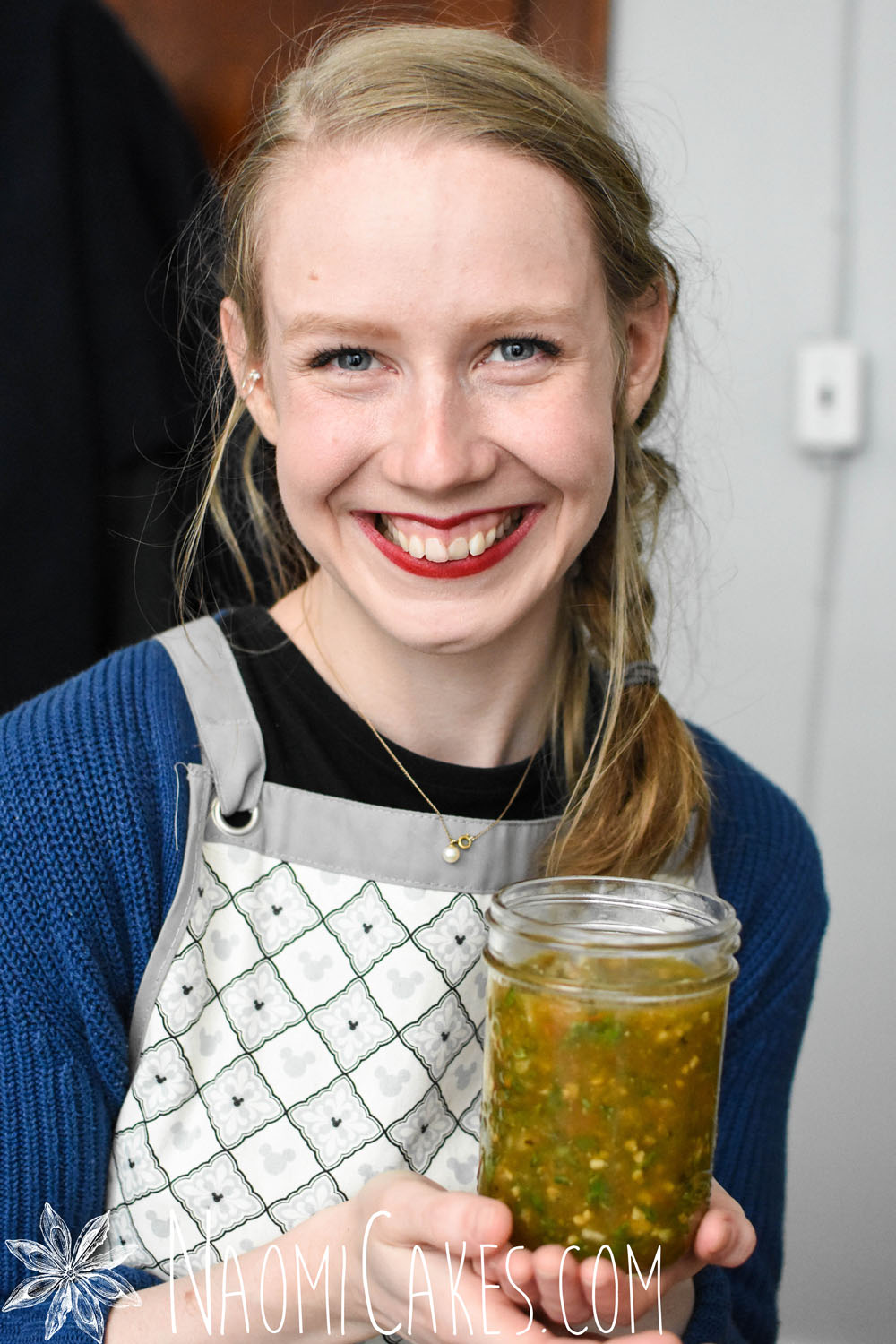
Thank you Micaiah for teaching me to make this delicious jalapeno dip, and for allowing me to share it here today!
The difference between fresh salsa and chile
Ok; yes, there is a difference. I am referring to this recipe as “Fresh salsa” because that is what this recipe is most like. After all, it is packed with the fresh flavor of lemon, cilantro and onion. That said, chile is actually made with 1/2 of its ingredients cooked first. This gives it a fresh taste, but it has a slightly longer shelf life (making it good to keep in the fridge for a bit longer).
So, to sum it up, here’s the difference: Fresh salsa is usually made with all fresh (uncooked) ingredients, and chile has some of the ingredients cooked and cooled before the fresh stuff is added.
Is this recipe spicy?
Yes; chile is like a fine fresh salsa or chunky hot sauce that is VERY HOT. If you want a milder version of this recipe, you can substitute 1/2 of the hot peppers for 2 tomatoes, or use a milder type of pepper.
How Guatemalan chile is made
Chile is made very similarly to fresh salsa, except that the peppers and tomatoes are actually cooked, and cooled, before the other ingredients are added. Here are the basic steps:
- Wash the produce in cold water, and remove the stems from the hot peppers and tomatoes. Dry fry in a pan until you get slightly blackened skins.
- Add a cup of water and some fresh garlic cloves, and cook until the tomatoes and peppers are very soft.
- Purée the mixture with salt and allow it to cool completely.
- Add chopped fresh cilantro, onion, and lemon juice.
- Serve.
That’s all there is to it!
Getting the best flavor
One of the keys to making sure this recipe turns out its best is to slightly blacken the skins of the tomatoes and peppers first. You can do this in a dry, hot pan (no olive oil or anything) on the stove, in the oven on a baking sheet under a broiler, or on an open flame (such as a barbecue). Just note that if you do use a dry pan on the stovetop, it may get some residue that is hard to clean off afterwards! The easiest way to do it (although not always the most accessible), is on the barbecue – for easy cleanup and the best blackened flavor.
The best kind of peppers to use for Guatemalan Chile
You can make Guatemalan chile with any kind of hot pepper, but since jalapeño peppers are probably the most accessible in our area, we (my sister and I) decided to make it with those. We have also made this with Scotch Bonnet peppers before, and let me tell you, those are also delicious – but definitely more spicy! So, if you want to go for a milder version of this sauce, go for a milder pepper, or sub out some of the peppers for tomatoes instead.
Jalapeño peppers make this recipe look much more like salsa verde (a green salsa), while red pepper varieties will yield a bright red colored salsa (more like tomato salsa) with green flecks of cilantro throughout.
Working with peppers and avoiding burns
When you’re working with hot peppers, it is wise to wear protective food-safe gloves to keep your hands clean and your skin free of contact with the hot pepper oils. Keep your hands away from your face while you work, discard the gloves when you are done, and wash your hands thoroughly before moving on to anything else. Trust me, I’ve burned my hands with hot peppers before – and it’s not worth the risk!
For this recipe, you can get away without using gloves if you’re using a milder pepper like jalapeños (as the recipe suggests). You can wash the peppers, only touching the outside skin of the pepper. Then cut the tops off, and be careful not to touch the exposed inside of the pepper. After that, you can handle the peppers with tongs or other cooking utensils to avoid contact with your skin.
Protecting your eyes
When working with hot peppers, it’s important to protect your eyes. Make sure that you do not touch your face with hands that have been working with hot peppers, either gloved or not. You will also want to make sure that you blend the cooked peppers and tomatoes with a closed food processor or blender, not an immersion blender, to prevent anything from splattering onto your face or skin.
Ingredients and substitutes
This recipe is remarkably easy to adjust to your taste preferences, or to the ingredients you have on hand. Below are a list of ingredients, substitutes, and things you can leave out to still make this a delicious spicy experience.
Peppers
Guatemalan chile can be made with any type of hot fresh peppers. Try jalapeno peppers (as this recipe suggests), scotch bonnet peppers, chili peppers or a hotter variety like habanero pepper, or serrano pepper. If you want to try something milder, go for a banana pepper, poblano peppers, or a bell pepper (for an option with no heat at all). Poblano chiles are probably one of the best milder peppers out there for this recipe, or you can try de-seeding your jalapeños before making this recipe to make them less spicy.
Tomatoes
Any type of tomato works well for this recipe. For best results, use something like roma tomatoes for a thicker chile. In these pictures, I have used medium sized tomatoes on the vine (which are a little juicier, but more commonly on hand in my household). If you’re using a small tomato variety, make sure you use enough tomatoes to equal about the same weight as a medium roma tomato or tomato on the vine (it doesn’t have to be exact).
Cilantro
This is, to me, one of the keys to this recipe being amazing; however, if you are not a fan of cilantro, this recipe is still delicious and packed with great flavor if you omit the cilantro.
Onion
You can use any type of onion for this recipe. I often end up using yellow onions (again, it’s what I most often have on hand– or any other kind of cooking onion), but red onion or a sweet variety like vidalia onions would also be delicious. I would avoid leeks or other milder onions for this recipe.
Garlic
You can omit the garlic in this recipe, if you prefer a milder taste (or if you don’t have fresh garlic on hand). If you want the extra flavor (and health benefits!), then don’t skip this amazing ingredient!
Lemon
Feel free to try substituting lime juice for the lemon juice in this recipe, if you prefer.
Salt
Any type of salt will work for this recipe; I most often use sea salt, pink salt, or just regular table salt.
Ways to eat chile
Personally, I love to eat this any number of ways. Personally, I often find that accompanying this recipe with a good amount of sour cream or homemade guacamole to help make the heat/spice more tolerable – but that of course, depends on what you’re serving, and your personal preference. Here are some of my favorite things to each with this delicious Guatemalan food:
- Burritos
- Tacos
- Nachos
- Crispy tortilla chips
- Enchiladas
- Baked potatoes
- Grilled cheese sandwiches
- Burgers
- Beans
- White rice
Seriously, this stuff is amazing no matter how you serve it! Try eating this with just about anything savoury that could use a little extra kick and cilantro/lemon flavour.
How long does fresh salsa last in the fridge?
The short answer is, fresh salsa is usually best served on the day that it is made. I would not keep it longer than 1-2 days in the fridge.
Chile, on the other hand, is not like other fresh salsa recipes. It is made with some of the ingredients cooked before the fresh ingredients are added! This process, combined with plenty of salt and lemon, gives Guatemalan chile a slightly longer shelf life. You can usually keep chile in the fridge for about a week before it will start to go bad.
You will need:
- Ingredients (see recipe card)
- Cutting board
- Quality chef’s knife
- Frying pan
- Measuring cups and spoons
- Mixing bowl
- Spatula
- Lemon juicer
- Jars, for storage
- Food processor
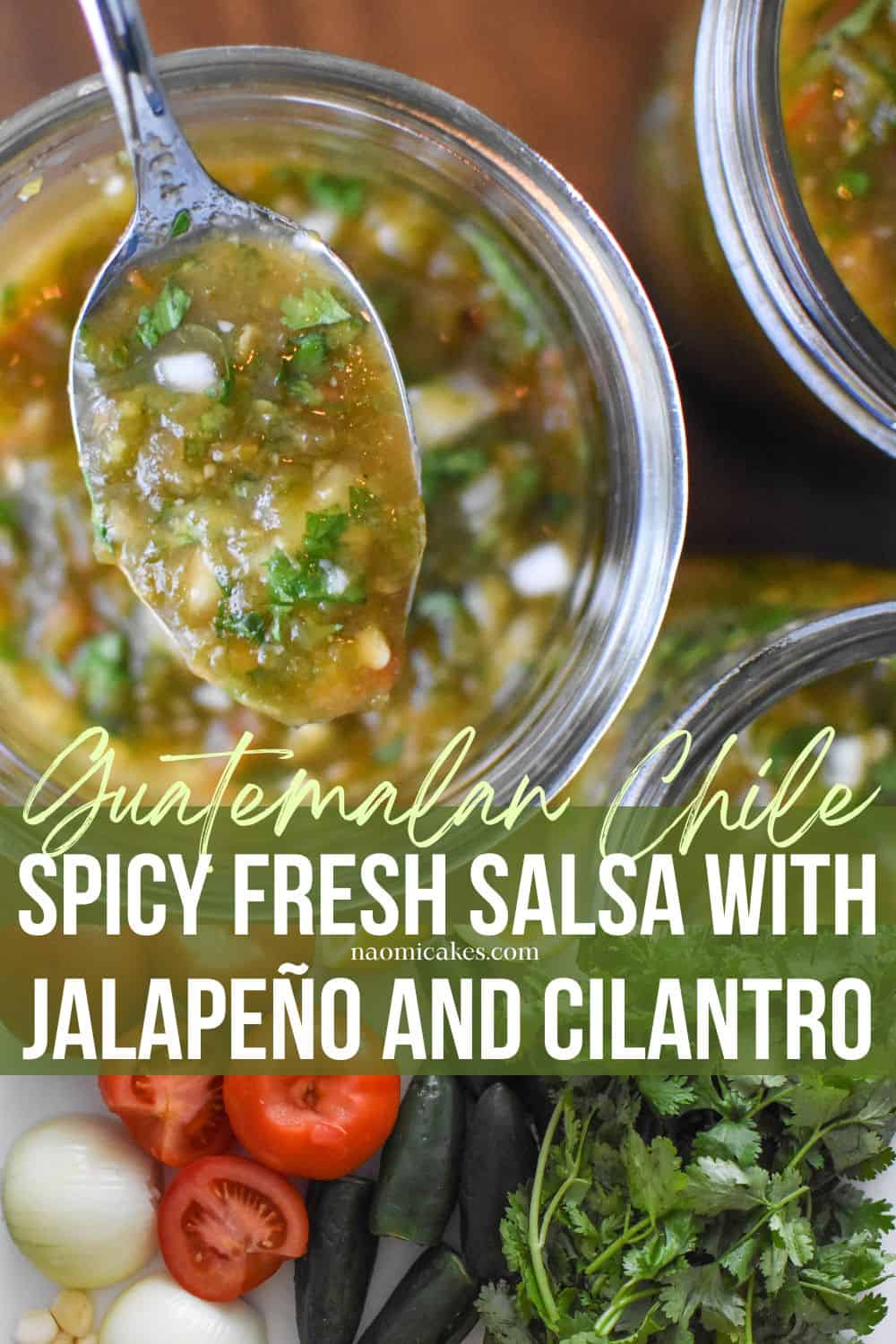
Guatemalan Chile
This recipe is for a delicious, easy to adapt type of hot sauce/salsa to eat on whatever you like. It's fresh, simple, and oh-so-good!
Ingredients
- 4 med tomatoes large Roma tomatoes are best, but you can use anything (as I have in this tutorial)
- 6 large jalapeño peppers or about 120g (4-5oz) of another type of hot pepper (assuming each jalapeño pepper weighs about 20g or 0.7oz)
- 3/4 cup water
- 2-3 large cloves garlic
- 1 sm-med onion minced
- 1/2 bunch cilantro chopped
- 1 med-large lemon
- 1 Tbsp salt
Instructions
-
First, prep the vegetables. Peel the onion and garlic, wash all of the vegetables, and remove the stems of the tomatoes and jalapeños. Juice the lemon, chop the cilantro leaves, and mince the onion. Set aside.
-
In a large frying pan, dry-fry the de-stemmed whole tomatoes and jalapeños till just browned/blackened/blistered. Remove from heat.
-
In a med-large saucepan, combine the fried tomatoes, jalapeños, and garlic (can be whole cloves) with the water. Bring to a boil and cook, covered, until the vegetables are very tender. Set aside to cool.
(Note: If using a blender, the mixture will have to be completely cool before moving on to the next step. If using a food processor, make sure the top loader is open so that the heat can escape.)
-
Spoon the tomato mixture into a food processor or blender; purée. Pour into a mixing bowl.
-
Stir in the chopped cilantro, minced onion pieces, lemon juice, and salt. Taste (careful- it's spicy!!) to make sure there's enough salt; add more to taste if you prefer. Pour into pint jars, and refrigerate.
-
Serve as a hot sauce or salsa; store in the refrigerator.
Recipe Notes
- If you like, you can purée the some, or all, of the onion with the vegetables to make a smoother sauce.
- This recipe makes about 5-1/2 cups of chile, almost enough to fill 3 pint jars.
CAUTION: Be careful when handling hot peppers! I recommend cutting them without touching the exposed flesh of the pepper, or using gloves to protect your hands as you work. Also, be sure to keep your eyes protected when you blend everything up – This is a friend to your mouth, but definitely not to your eyes!
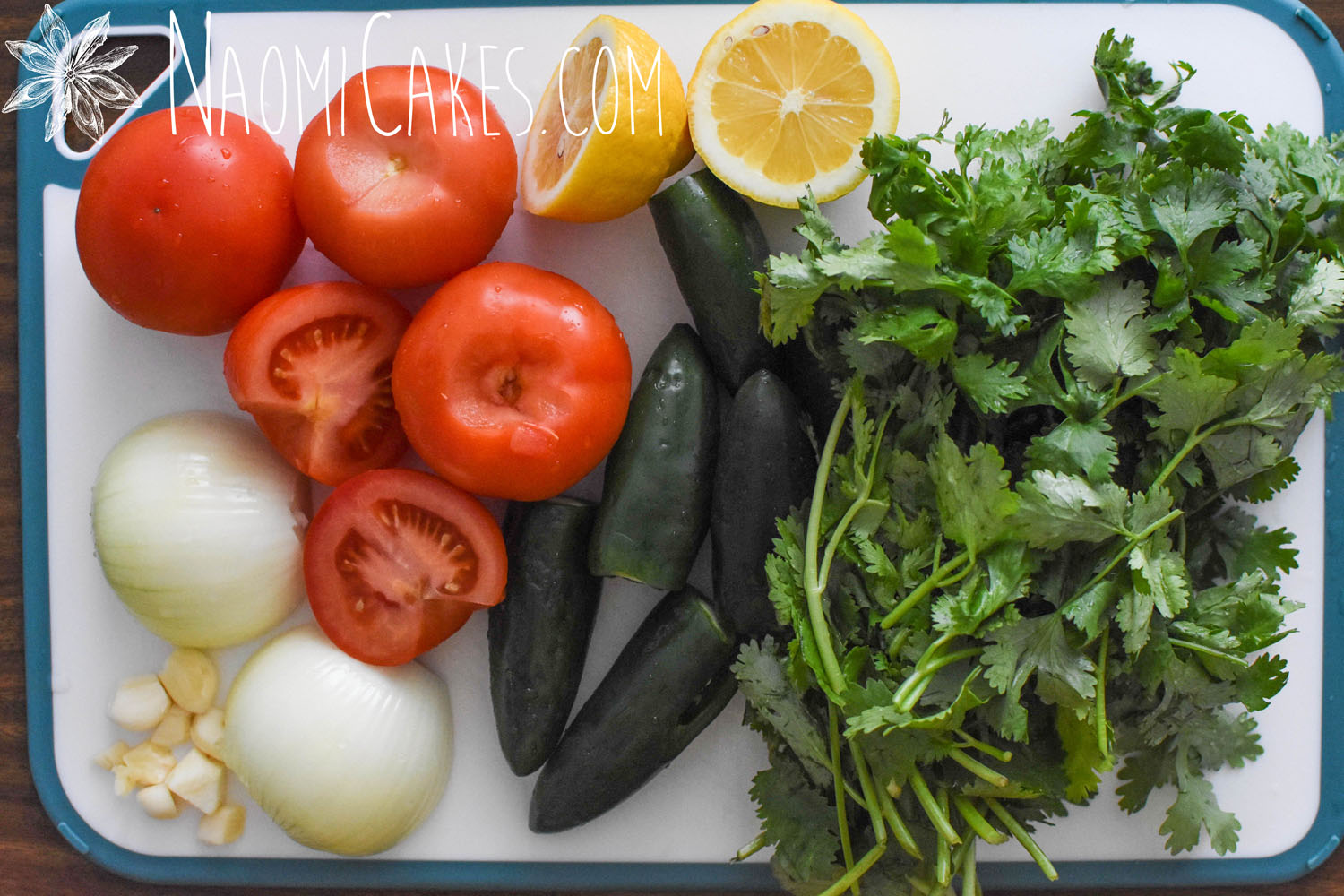
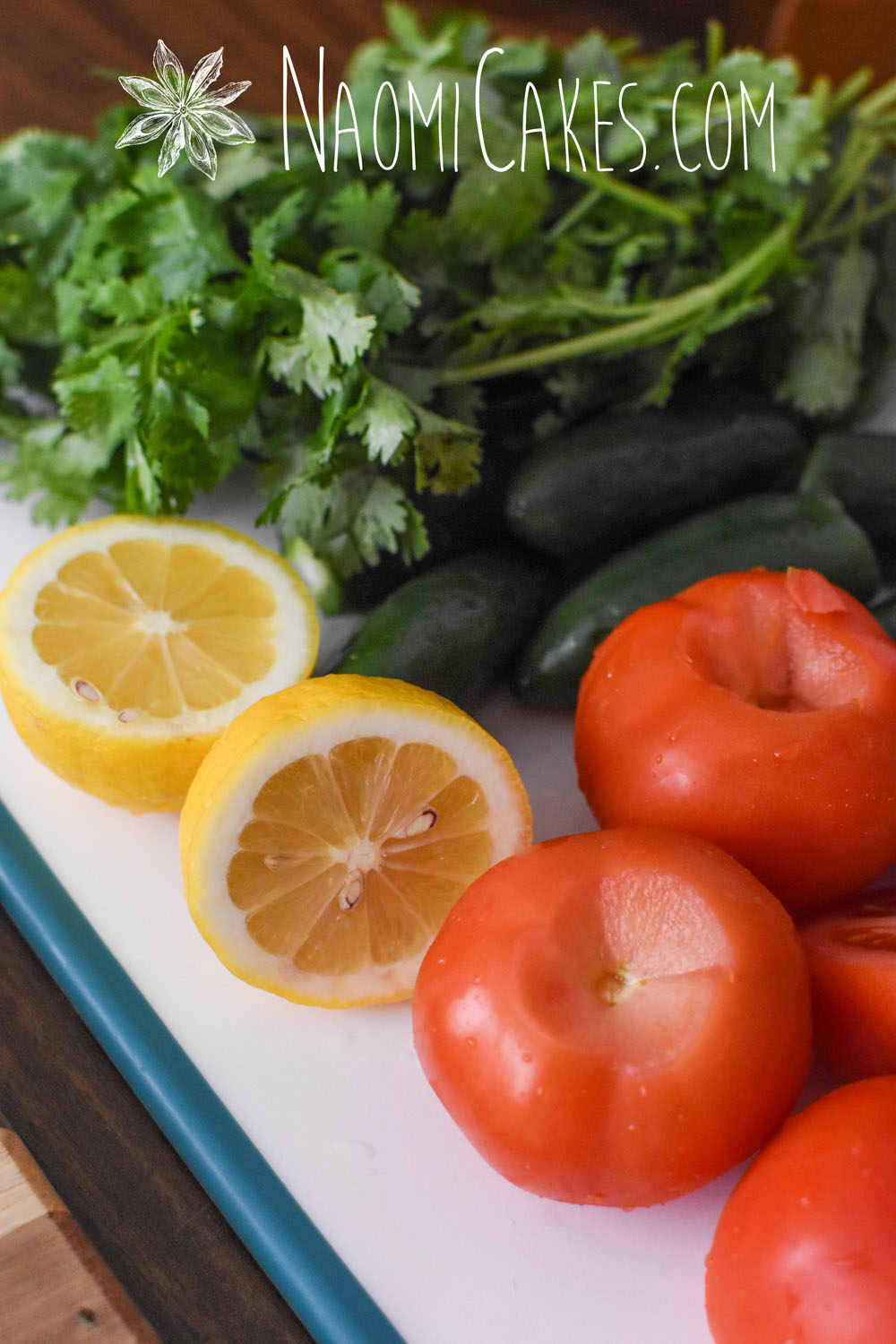
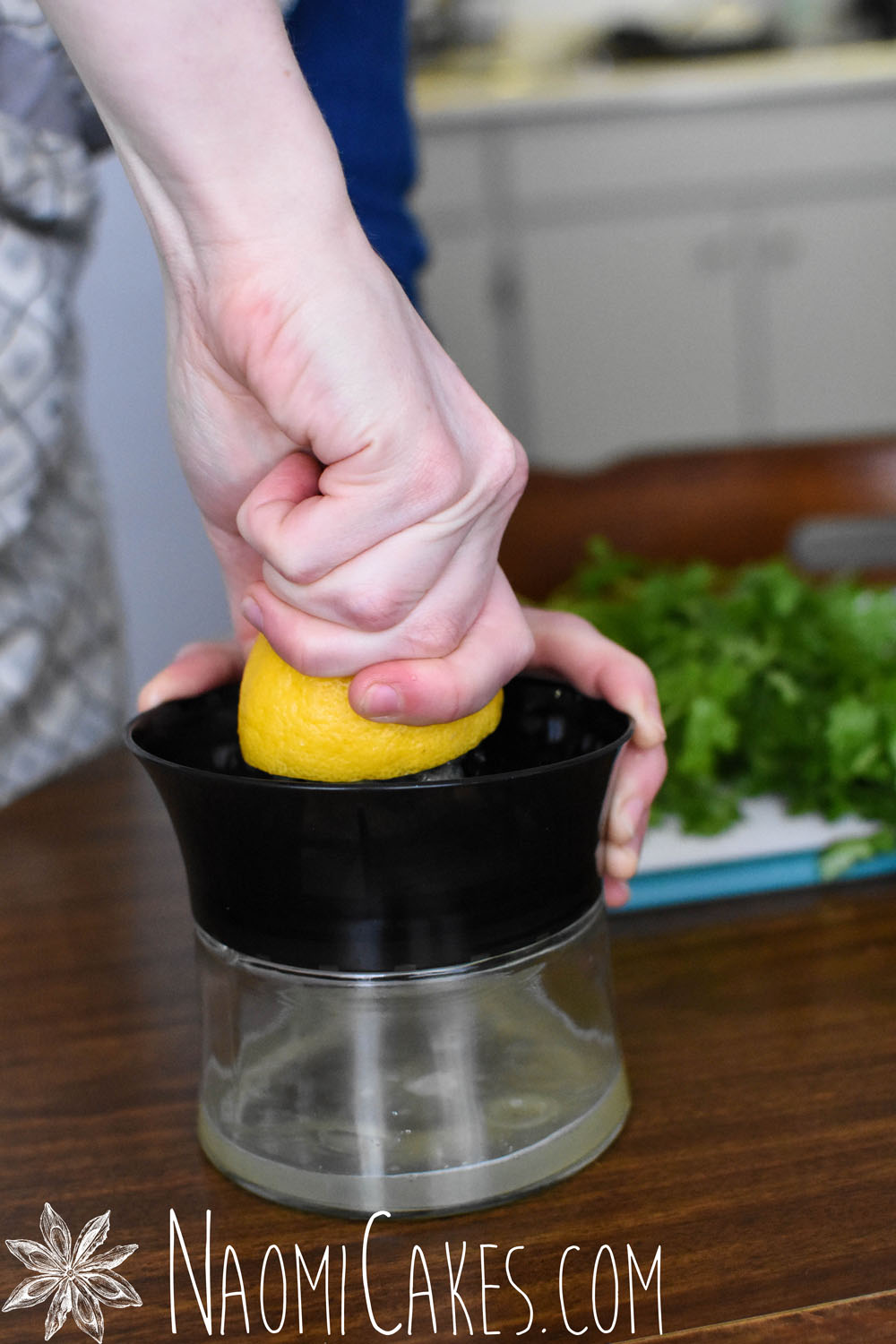
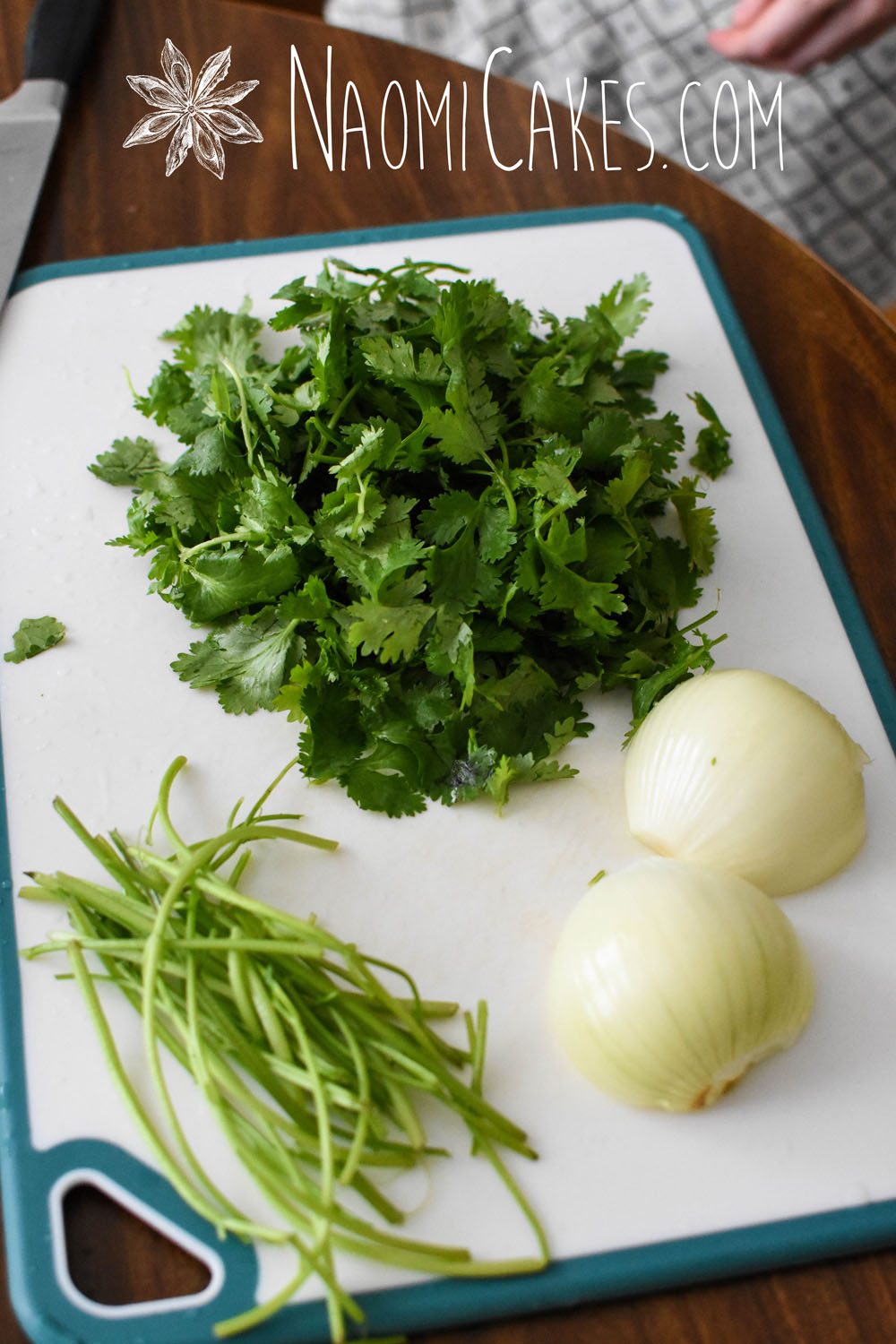
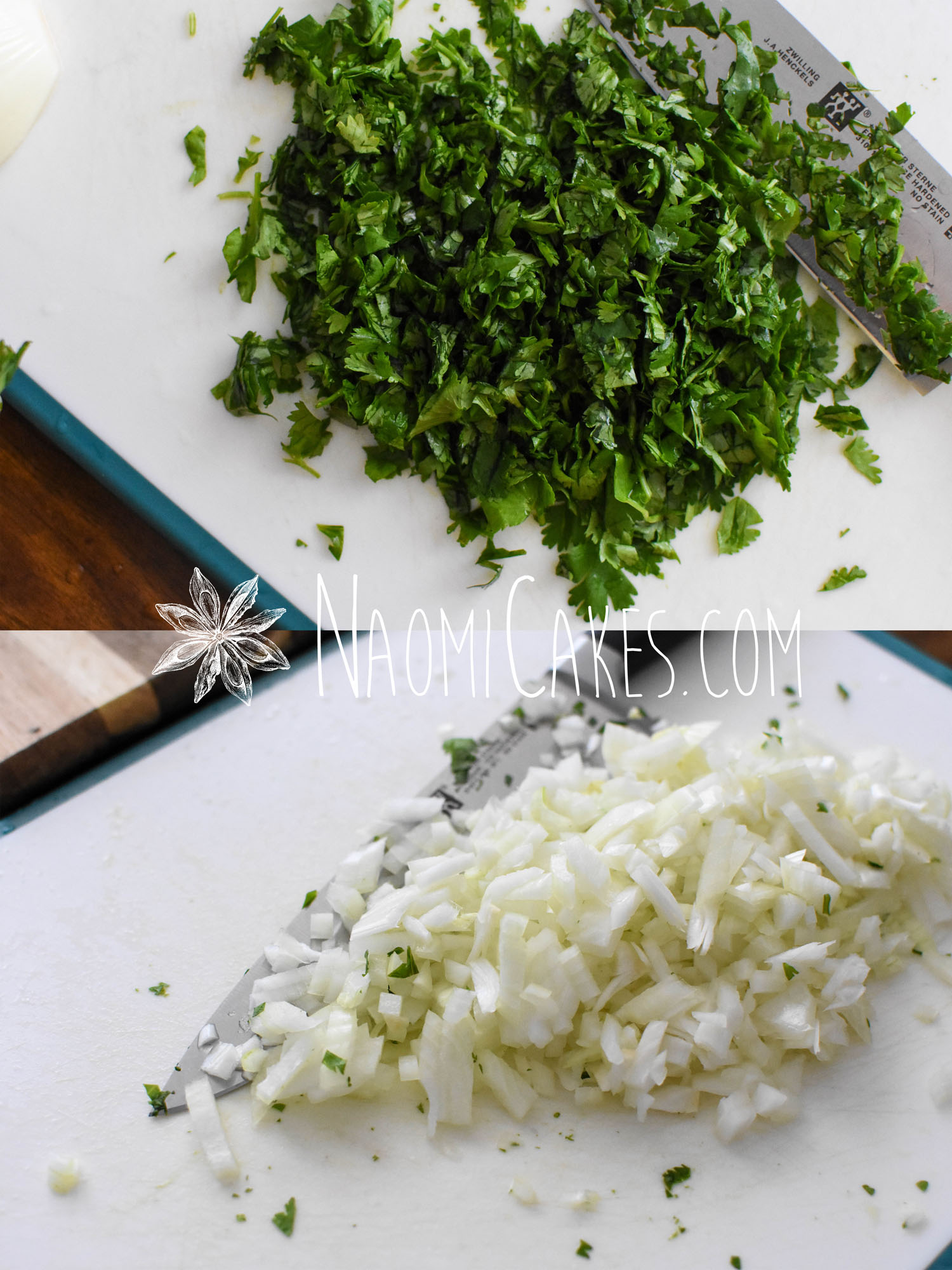
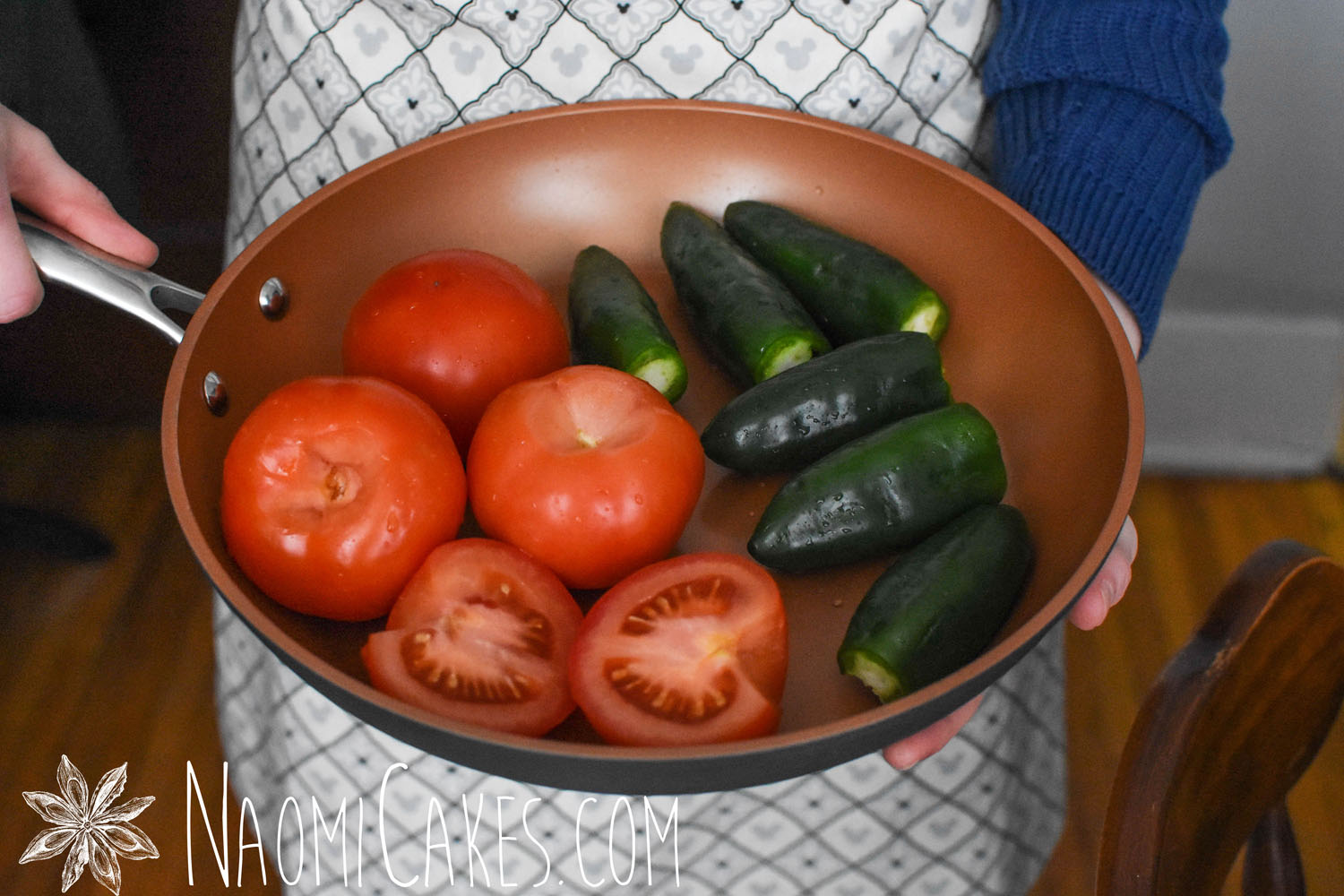
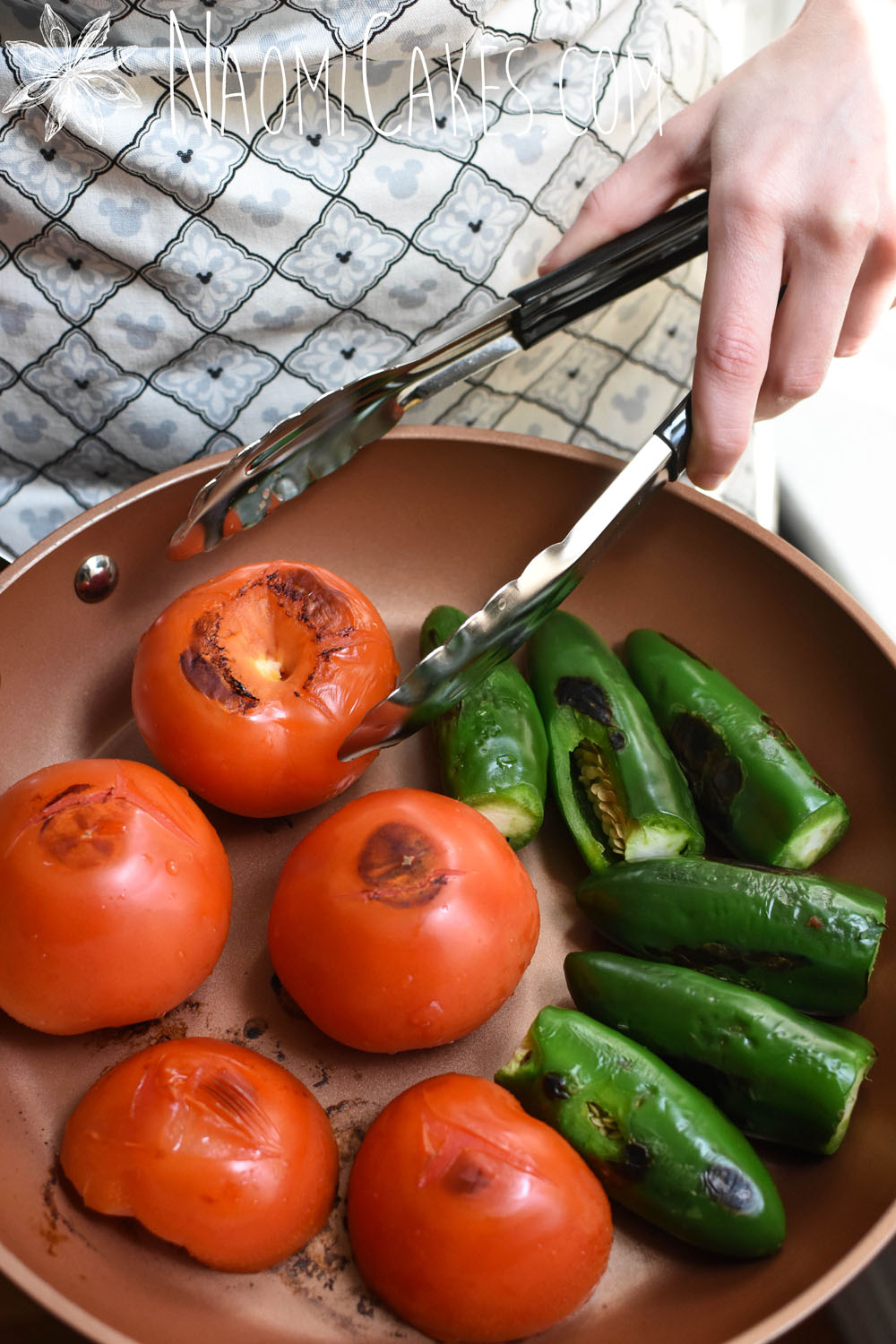


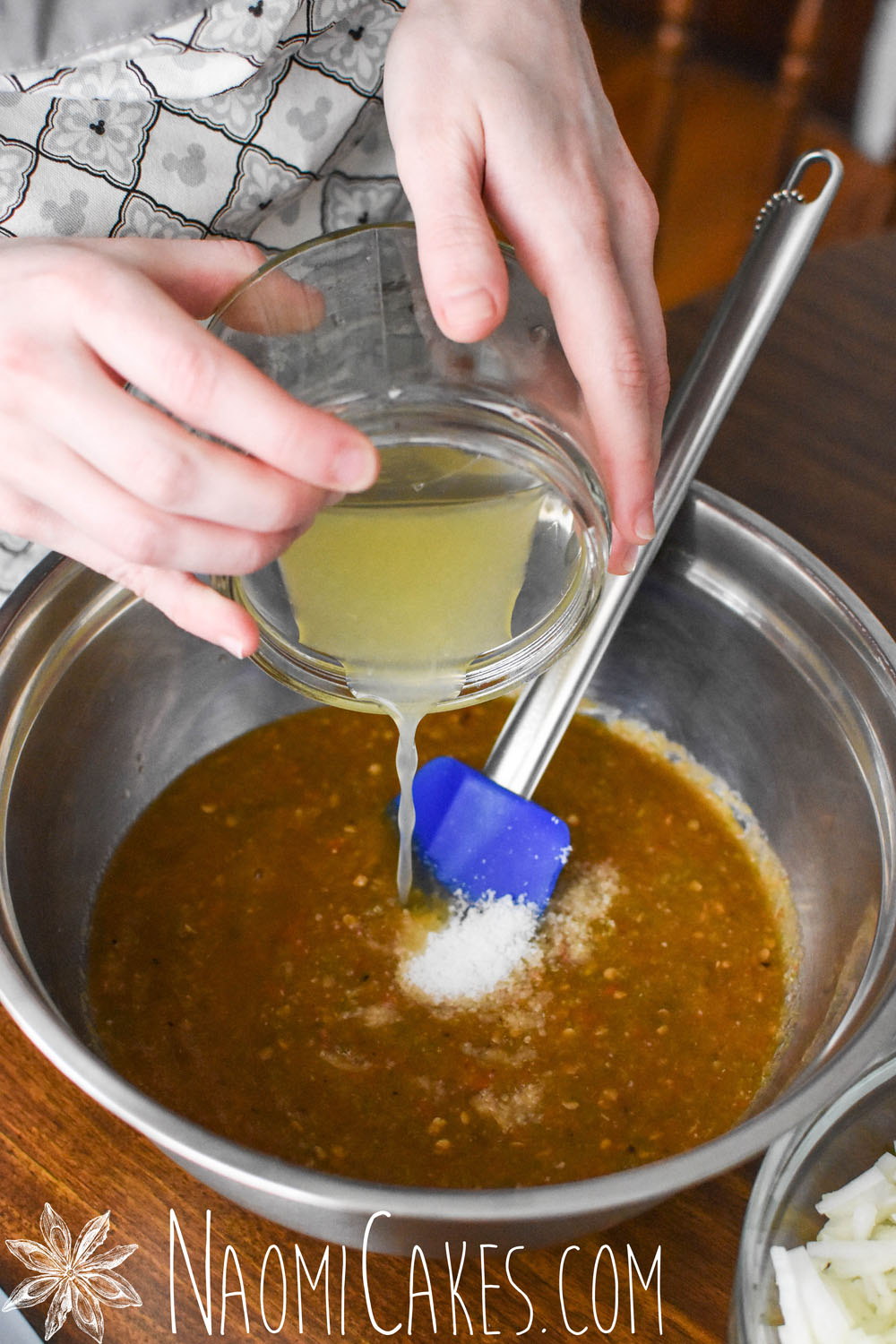


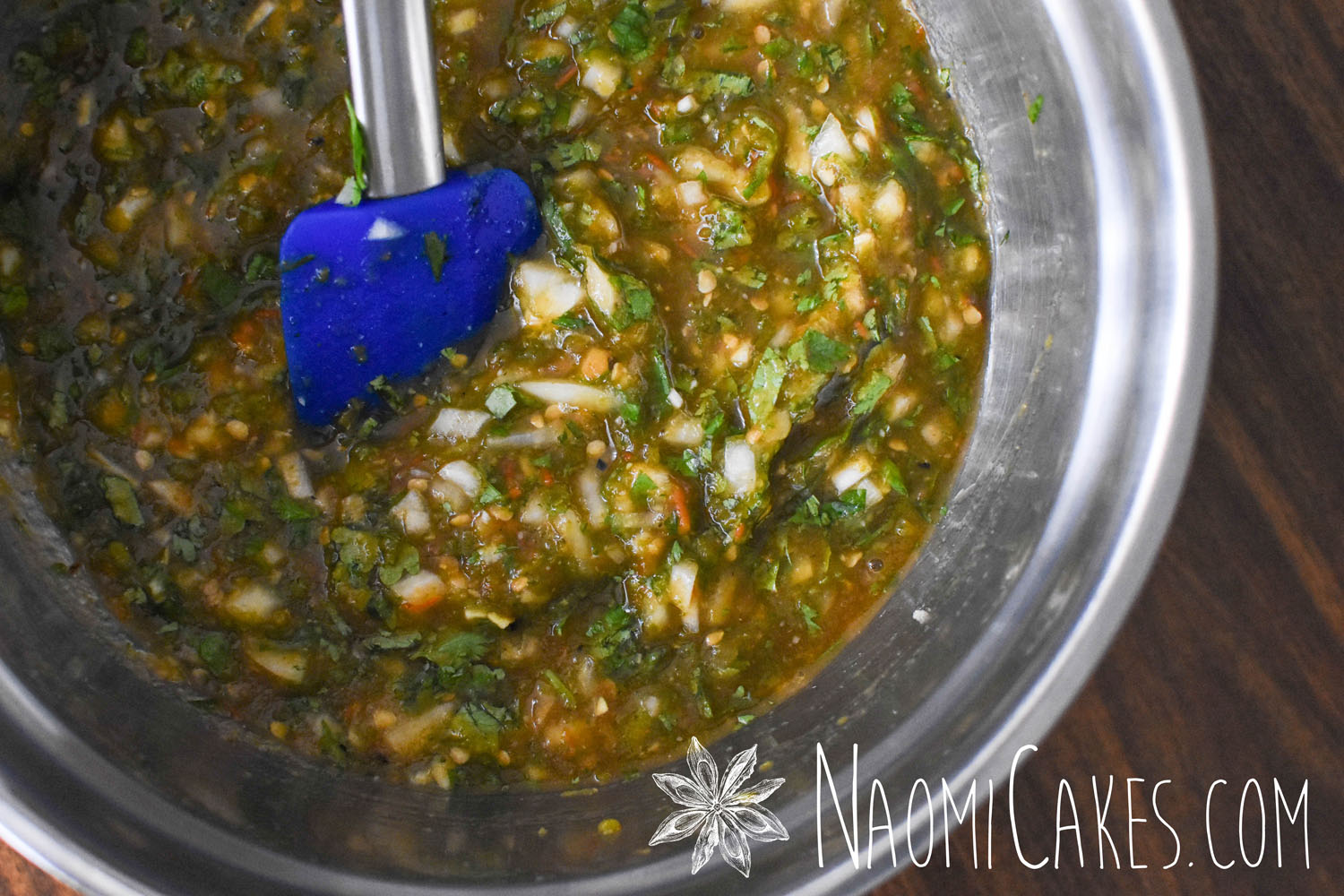
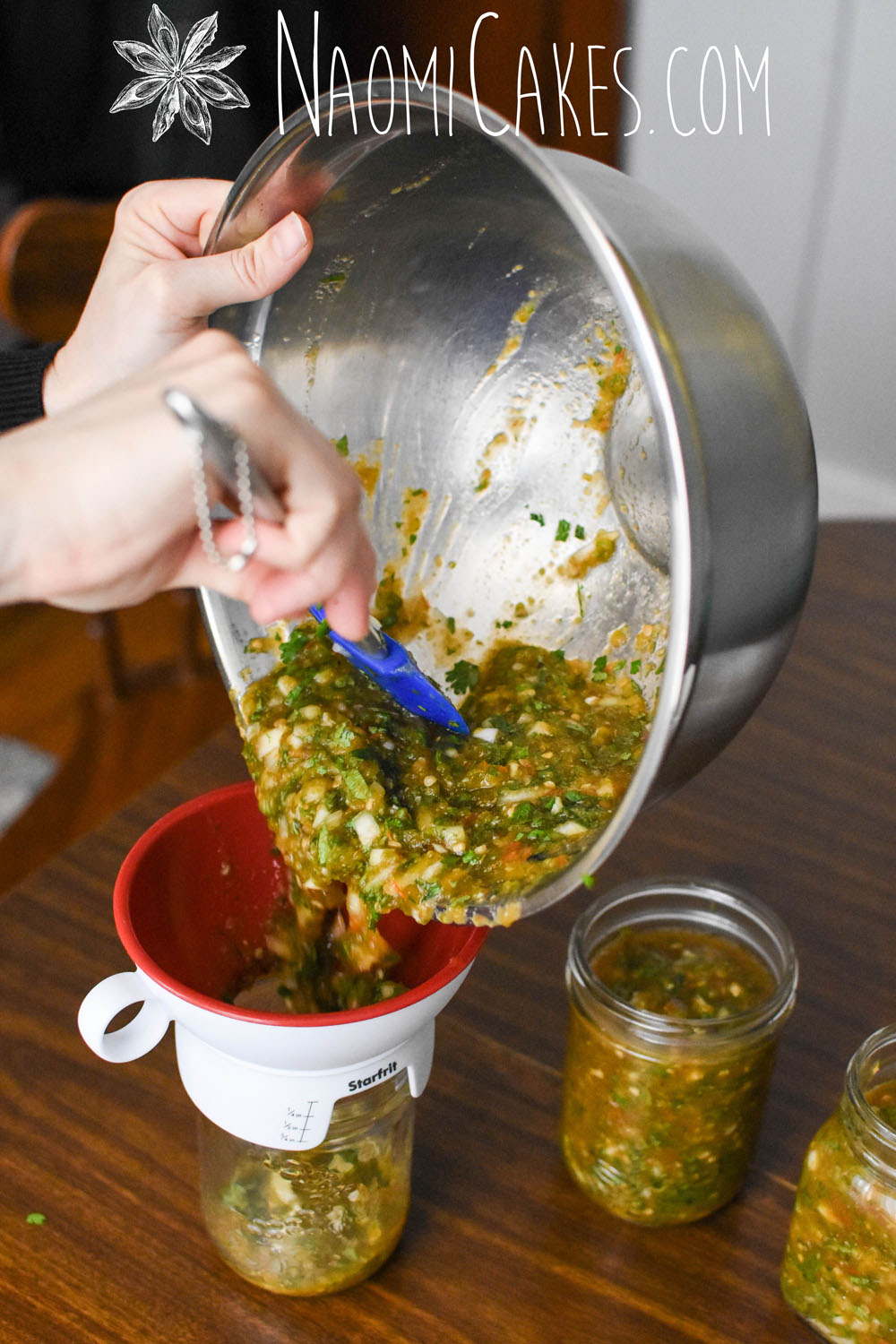
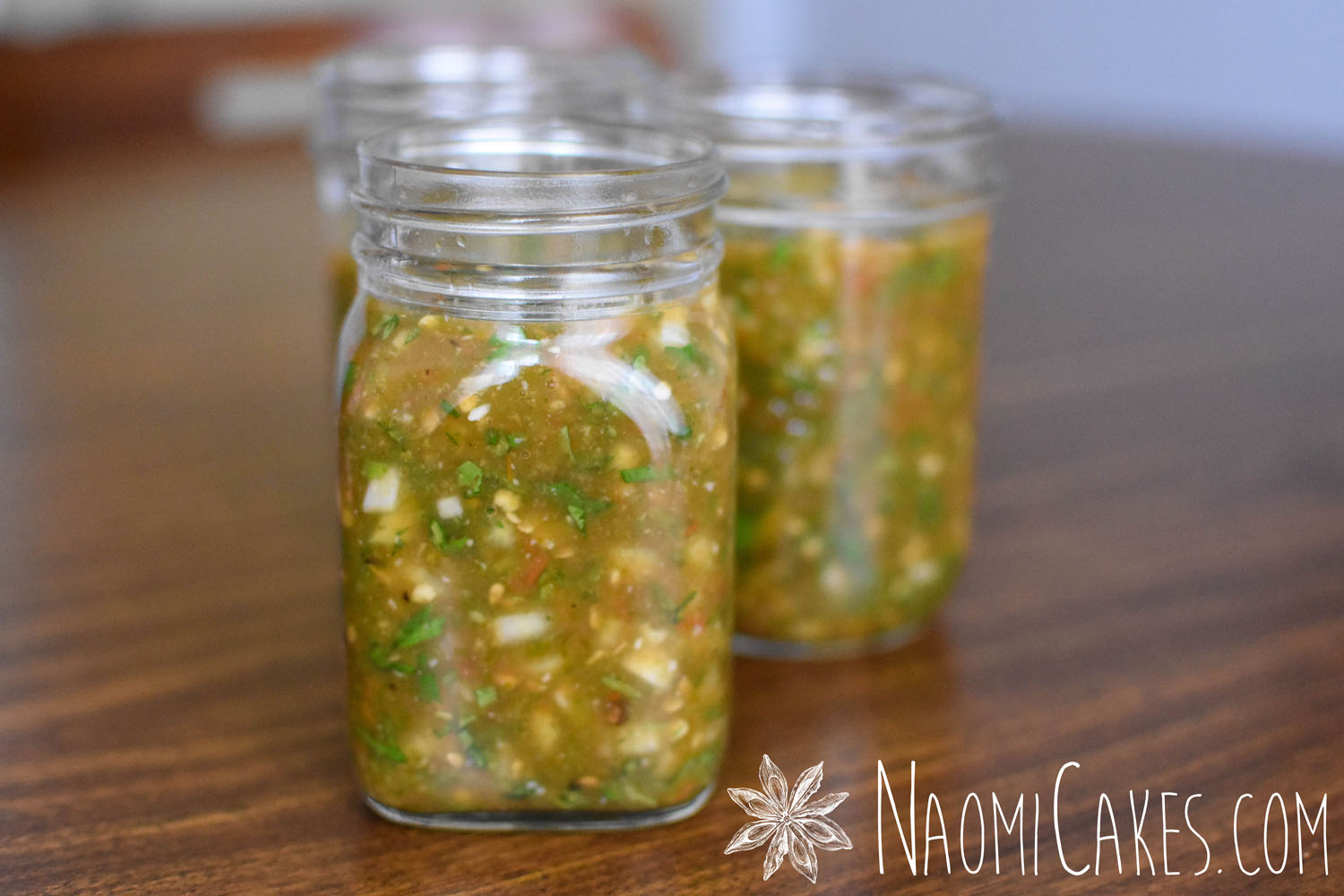
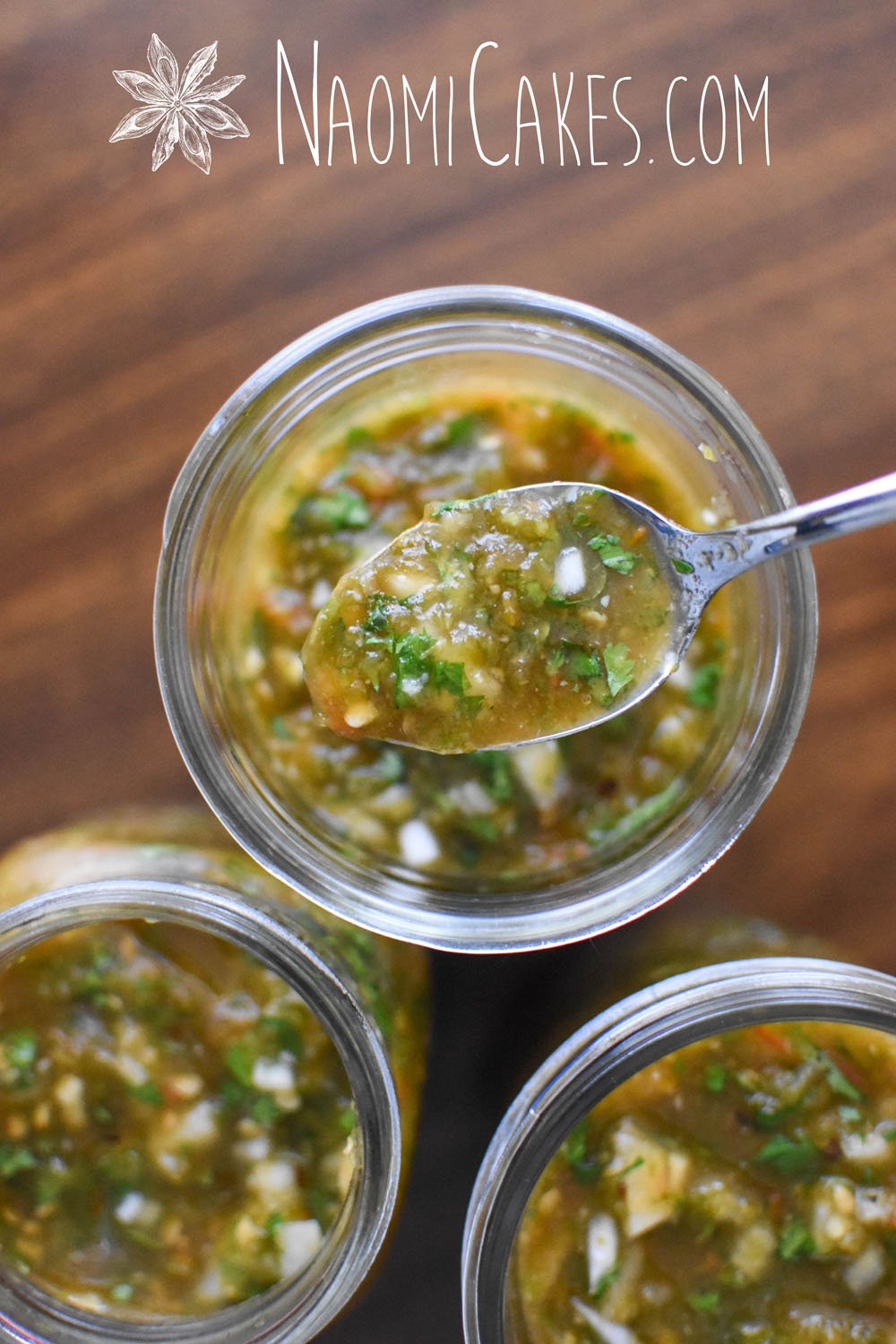
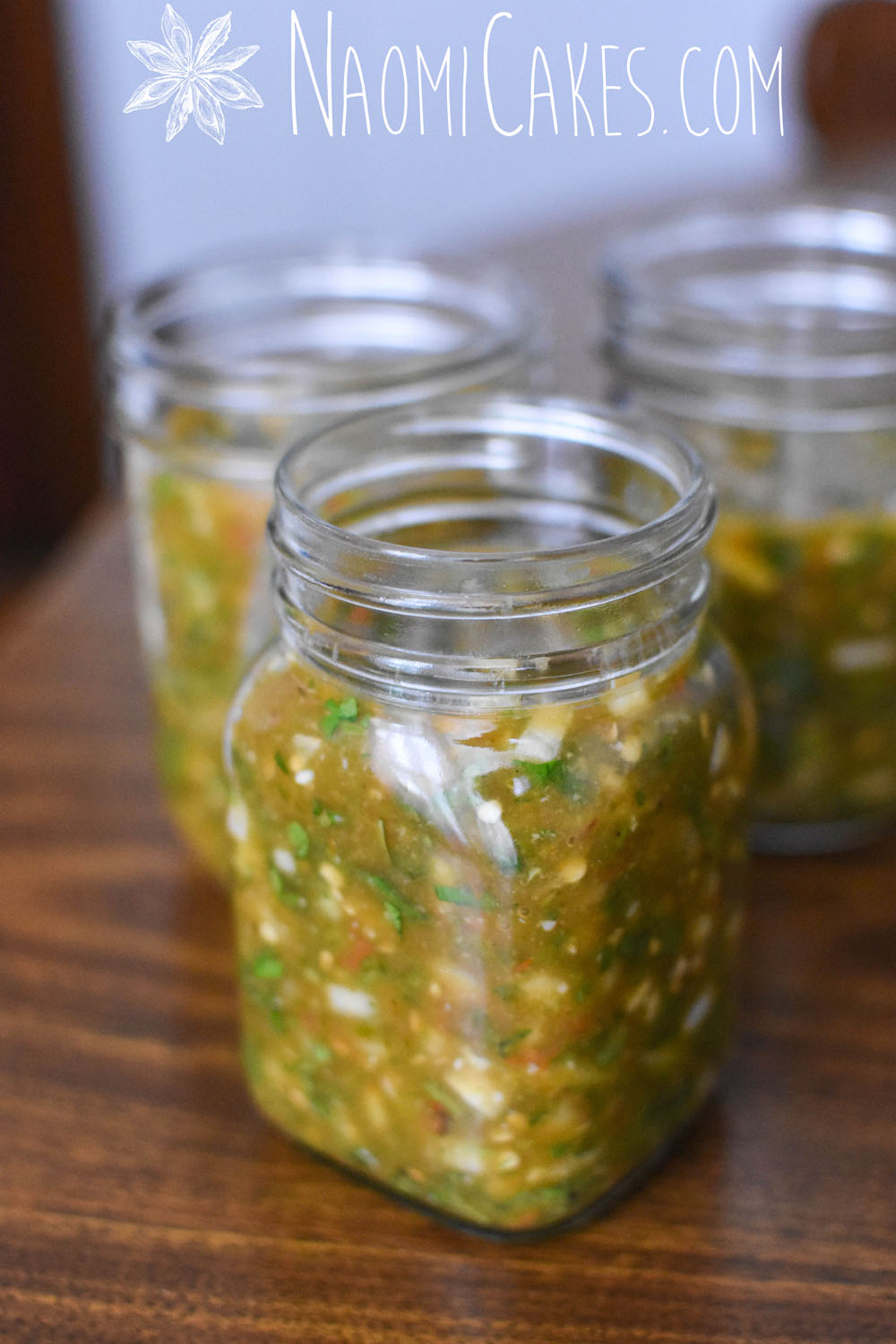
If you like this recipe, you may also like:
- Easy Homemade Flour Tortillas
- Quick Cook Method for Beans
- Simple Homemade Taco Seasoning
- Easy Quinoa Tabouleh
As always, leave your thoughts in the comments! As always, if you make this recipe, please tag me in your photos on Facebook @naomicakes or Instagram @naomicakesofficial! I would love to see your work!
Bye for now!
–Naomi
This post contains affiliate links.
[…] personally I think that if you want some added heat, you should just add some hot salsa or Guatemalan Chile to top it […]